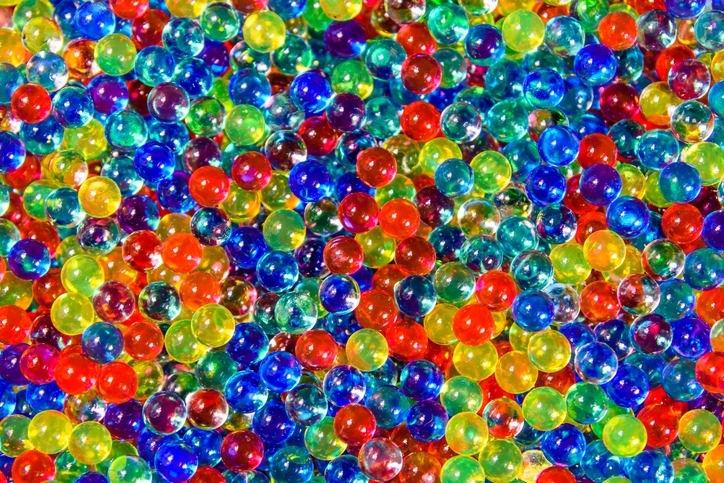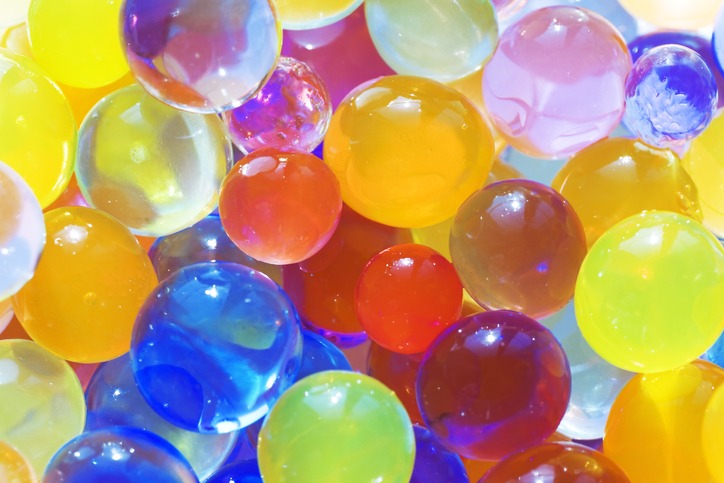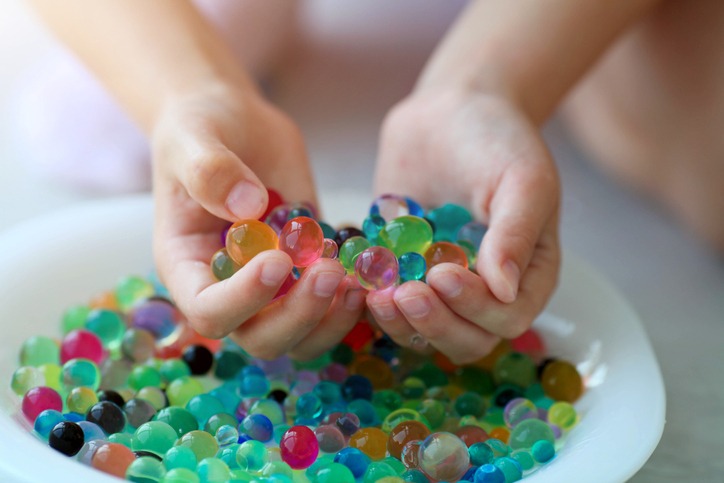Water gel beads, those tiny, colorful spheres that expand in water, have become increasingly popular for use in home décor, gardening, and even as sensory play items for children. While they add beauty and fun to various activities, the question of how to responsibly dispose of them once they’ve served their purpose arises.
It’s essential to consider the environmental impact of discarding these synthetic polymers improperly. This article provides a straightforward guide to disposing of water gel beads in a way that’s safe for the environment and aligns with best waste management practices.
What are Water Gel Beads?
Water gel beads or gel balls are small, superabsorbent polymers that can expand significantly when soaked in water. Originally developed for agricultural use to help soil retain moisture, these beads have found their way into various other applications due to their unique properties. They come in a rainbow of colors, making them a popular choice for decorative purposes in vases, as part of centerpieces, and even in sensory play activities for children. When dry, water gel beads are tiny and hard, but upon contact with water, they swell to many times their original size, creating a squishy, jelly-like texture that is visually appealing and tactilely engaging.
Made primarily from a polymer substance that absorbs and retains water, these beads can slowly release moisture, making them useful for plant hydration in lieu of regular watering. Despite their wide range of uses, the synthetic nature of water gel beads raises questions about environmental sustainability and disposal methods.
The Uses of Water Gel Beads
Water gel beads are versatile and have been utilized in various ways across different sectors. Here are some of the most common uses:
- Home Décor: One of the most popular uses of water gel beads is in home decoration. Their vibrant colors and unique texture make them an excellent choice for filling vases, bowls, or jars to create visually appealing centerpieces.
- Sensory Play: Due to their soft and squishy texture, water gel beads are often used in sensory bins for children. They provide a tactile experience that can help in the development of fine motor skills and sensory processing. They can also be used as ammo for a gel ball blaster, a toy that can be played outdoors.
- Agriculture and Gardening: Originally designed for agricultural use, these beads help retain moisture in the soil, reducing the need for frequent watering. They are particularly beneficial for potted plants or in areas prone to drought.
- Air Fresheners: Water gel beads can be infused with essential oils or perfumes to act as air fresheners. As they slowly evaporate, they release a pleasant aroma, making them a practical and decorative air freshening solution.
- Cooling Packs: When soaked in water and then chilled, water gel beads can be used in homemade cooling packs. Their ability to hold moisture and then slowly release it through evaporation provides a cooling effect when applied to the skin.
- Crafts: Craft enthusiasts often use water gel beads as a material in making jewelry, such as necklaces and bracelets, or even in creating art pieces where their translucency and color can add a unique element to the work.
These diverse applications highlight the versatility of water gel beads, making them a valuable tool in both practical and creative contexts. Their ability to absorb and release water, coupled with their aesthetic appeal, has led to their widespread use in various fields.
Tips for Disposing Water Gel Beads
Disposing of water gel beads responsibly is crucial to minimize their impact on the environment. Here are practical tips to ensure their disposal is as eco-friendly as possible:
- Let Them Shrink: Before disposal, allow the beads to dehydrate and shrink back to their original size. This can be done by spreading them out on a tray and leaving them in a dry area for several days. Smaller beads take up less space in landfills and are less likely to cause issues if accidentally ingested by wildlife.
- Throw in Trash: Once dehydrated, place the shrunken water gel beads in a sealed bag and dispose of them in the trash. Although not the most eco-friendly option, this method prevents the beads from entering natural waterways where they can absorb water and potentially harm aquatic life.
- Use as Plant Soil Mix: For a more environmentally friendly option, mix the hydrated beads with plant soil. The beads can help soil retain moisture, reducing the need for frequent watering. However, use them sparingly to avoid waterlogging, which can be detrimental to plant health.
- Contact Local Waste Management: Some areas have specific guidelines for disposing of polymers like water gel beads. Contact your local waste management authority for advice on disposal to ensure compliance with local regulations.
- Avoid Drains: Never dispose of water gel beads down the drain. Their swelling property can cause blockages in plumbing systems, leading to potential damage and costly repairs.
By following these tips, you can dispose of water gel beads in a way that minimizes their environmental impact. It’s essential to consider the lifecycle of the products we use and opt for disposal methods that are responsible and sustainable.
Conclusion
In summary, while water gel beads offer a range of uses from home decor to gardening, their disposal requires careful consideration to avoid environmental harm. By allowing them to dehydrate, disposing of them with household trash, mixing with plant soil, or following local waste management guidelines, we can ensure these versatile beads are discarded responsibly.



